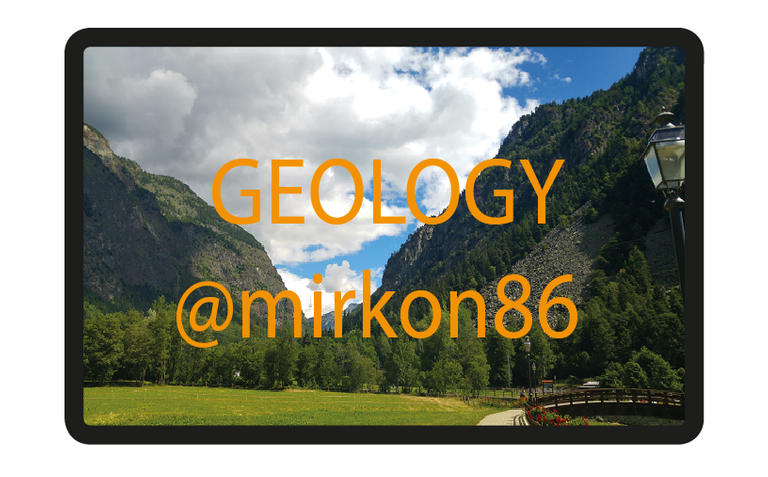

Ciao a tutti, bentornati sul mio profilo di steemit.
E con oggi si torna con un post geologico, o meglio con un post geologico-economico. Infatti, per iniziare, parleremo di cosa sono i giacimenti minerari, il legame tra la ricerca di risorse e la speculazione e poi chiuderemo con tutti gli aspetti geologico-ingegneristici che portano a definire se una determinata risorsa è conveniente o meno dal punto di vista economico.
Detto questo, buona lettura!
I giacimenti minerari
I giacimenti minerari sono volumi di minerale/i, altrimenti dette commodity, sufficientemente concentrati in una parte accessibile della crosta terrestre da essere estratti per avere un profitto economico. Ricercare dei giacimenti è sicuramente una delle prime applicazioni fatte in geologia. Per ragioni sociali ed economiche, si traggono molti vantaggi nell’estrarre nuove risorse, ma esse possono portare anche ad aumenti demografici e a danni ambientali a scala globale. Inoltre, la ricerca di nuove risorse implica anche fare buche nell’ambiente. Quale potrebbe essere una soluzione? La soluzione sarebbe quella di razionalizzarsi nell’uso delle risorse proponendo un’attività di riciclo e di conservazione, riducendo lo sfruttamento, ma allo stesso tempo aumentare la ricerca di esplorazione e trovare nuove risorse. Ma tutto ciò sarà possibile? Vorrei lasciare questa domanda a vostro giudizio e poi vi darò un'opinione mia nel finale del post.

Hello to all, welcome back to my steemit profile.
And with today we return with a geological post, or rather with a geological-economic post. In fact, to begin, we will talk about what are the ore deposits, the link between the search for resources and speculation and then we will close with all the geological-engineering aspects that lead to define whether a given resource is cheap or not from an economic point of view.
I hope you enjoy the reading!
Mineral deposits
Mineral deposits are volumes of ore/i, otherwise called commodities, sufficiently concentrated in an accessible part of the Earth's crust to be extracted for economic profit. Searching for deposits is certainly one of the first applications made in geology. For social and economic reasons, many benefits are gained in extracting new resources, but they can also lead to demographic increases and environmental damage on a global scale. Furthermore, the search for new resources also implies making holes in the environment. What could be a solution? The solution would be to rationalize the use of resources by proposing a recycling and conservation activity, reducing exploitation, but at the same time increasing exploration research and finding new resources. But will all this be possible? I would like to leave this question to your judgment and then I will give you my opinion at the end of the post.
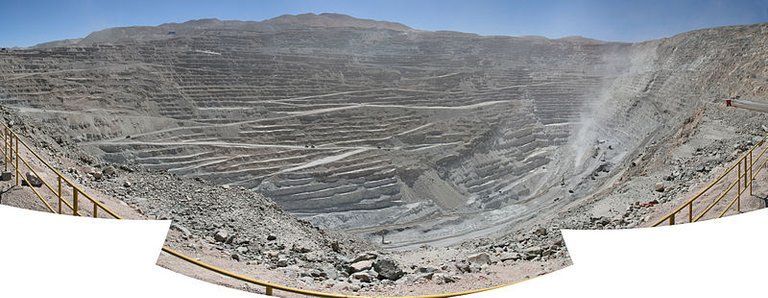
Miniera a cielo aperto di Chuquicamata in Cile / Chuquicamata open-cast mine in Chile
Wikimedia Commons
Risorse e speculazione: problematiche sociali ed economiche
Da quando esiste il mondo, la ricerca di risorse è sempre stata correlata anche le attività speculative. Per la legge della domanda e dell’offerta, più c’è richiesta e più se ne cerca. Ma ciò comporta, nel caso le risorse siano limitate, ad un aumento piuttosto elevato del valore. I metalli più preziosi e più utilizzati, infatti, hanno avuto dei picchi vertiginosi nell’aumento della richiesta e del prezzo. Un esempio eclatante è quello del rame che alla chiusura di alcune miniere (o quasi, tipo la miniera di Chuquicamata in Cile), ha fatto crescere di parecchio il prezzo di questa commodity. Difatti, con l'aumento della tecnologia e con le richieste che derivano da tutte le parti del mondo, la ricerca di risorse è diventata sempre più diversificata e complicata da gestire. Avete idea di quanti minerali ci sono in uno smartphone? Solo questo potrebbe farvi capire quante buche si devono effettuare per costruirli. Ma invece cosa comporta tutto questo dal punto di vista sociale? Vorrei chiudere questo paragrafo con questo esempio. Immagino che tutti conosciate console tipo playstation 2 e immagino anche che molti di voi, come me del resto, l'hanno avuta. Ebbene, per fare questa famosa console serviva una risorsa molto richiesta chiamata coltan (columbite-tantalite). Anche se ovviamente non è propriamente colpa delle aziende che hanno effettuato queste ricerche, la grande presenza di questa risorsa in stati come il Congo ha provocato negli abitanti una grande e rapida trasformazione dal punto di vista sociale. Si passava dal lavoro di bambini in miniera alle guerriglie per appropriarsi dell'area. Non sempre dal punto di vista sociale, la ricerca di risorse porta buoni frutti... Ma per fortuna, non è sempre così ;)
Resources and speculation: social and economic issues
Since the world exists, the search for resources has always been correlated with speculative activities. For the law of supply and demand, the more there is demand, the more one looks for it. But this implies, if resources are limited, a rather large increase in value. The most precious and most used metals, in fact, have had peaks in the increase in demand and price. A striking example is that of copper that at the close of some mines (or almost, like the Chuquicamata mine in Chile), has increased the price of this commodity. In fact, with the increase in technology and with the requests coming from all parts of the world, the search for resources has become increasingly diversified and complicated to manage. Do you have any idea how many minerals there are in a smartphone? Only this could make you understand how many holes must be made to build them. But what does all this involve from the social point of view? I would like to close this paragraph with this example. I suppose you all know console type playstation 2 and I also imagine that many of you, like me, have had it. Well, to make this famous console needed a much requested resource called coltan (columbite-tantalite). Although obviously it is not really the fault of the companies that have carried out these researches, the great presence of this resource in states such as Congo has provoked in the inhabitants a great and rapid transformation from the social point of view. We passed from the work of children in the mine to the guerrillas to appropriate the area. Not always from a social point of view, the search for resources bears good fruit ... But fortunately, it's not always like that ;)
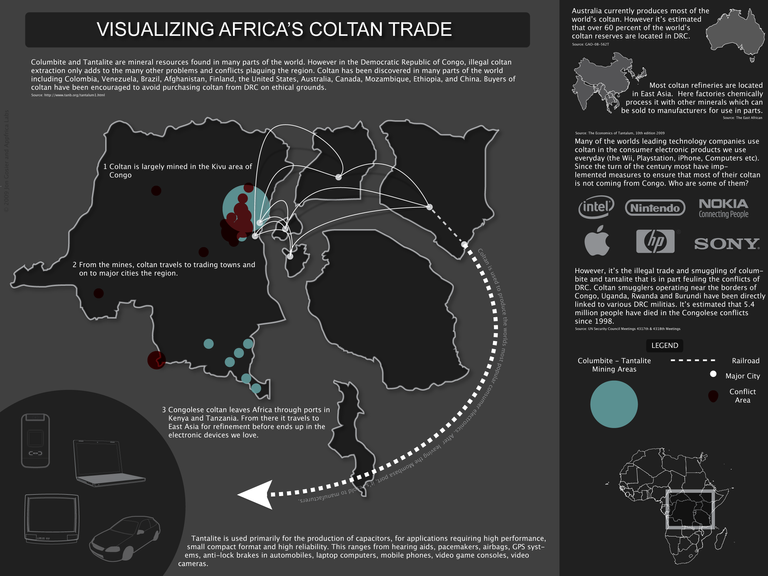
Immagine che mostra gli utilizzi del Coltan / Image showing the uses of coltan
Flickr
Quand'è che una risorsa è conveniente da estrarre?
Per iniziare si deve sapere se una risorsa è stata scoperta o no. Nel caso sia stata scoperta si dovrà capire se è una risorsa identificata, condizionata o è una riserva, mentre se non è stata scoperta si dovranno capire se in un’area conosciuta ci siano risorse ipotetiche o nel caso di aree sconosciute, risorse speculative. Ma cosa significano questi termini?
•Una risorsa identificata è una risorsa, la cui locazione, concentrazione, qualità e quantità, è conosciuta e stimata da evidenze geologiche. Le risorse dimostrate, stimate, e sub-economiche sono quelle identificate.
•Una riserva è una risorsa che potrebbe essere economicamente estratta al tempo della sua determinazione, ammesso che gli impianti siano in posto ed operativi. Le riserve si riferiscono soltanto al minerale estraibile.
•Una risorsa condizionata è una risorsa che al tempo della sua determinazione potrebbe essere economicamente prodotta, ma fattori economici o tecnologici non lo rendono ancora possibile.
•Una risorsa ipotetica è una risorsa non scoperta, simile a quella di giacimenti conosciuti, la cui presenza nello stessa area mineraria è ragionevolmente possibile se sussistono condizioni minerogenetiche analoghe. Se l’esplorazione mineraria conferma l’esistenza di queste risorse, queste, diventano risorse scoperte.
•Una risorsa speculativa, infine, è una risorsa non scoperta che potrebbe essere presente sotto forma di giacimenti di tipologia nota o sconosciuta in ambienti geologici favorevoli, ma dove in precedenza non sono state fatte scoperte (area sconosciuta). Il potenziale economico di queste risorse è sconosciuto in partenza. Se l’esplorazione conferma l’esistenza di queste, queste, diventano risorse scoperte.
Da come si può notare, la ricerca delle risorse ha varie sfaccettature e dal punto di vista economico bisogna essere molto attenti se non si vuole perdere soldi. Infatti, per le risorse non scoperte come quella ipotetica e speculativa o per quelle scoperte, ma condizionate, si rischia di andare in perdita e quindi conviene fare sempre molta attenzione nel comprendere se scavare in un certo punto può avere senso o meno. Per evitare danni economici rilevanti, quindi, è opportuno determinare in anticipo i propri guadagni e le proprie spese.
When is a resource convenient to extract?
To get started, you need to know if a resource has been discovered or not. If it has been discovered, it will be necessary to understand if it is an identified, conditioned or reserve resource, while if it has not been discovered, it will be necessary to understand if in a known area there are hypothetical resources or in the case of unknown areas, speculative resources. But what do these terms mean?
• A identified resource is a resource, whose location, concentration, quality and quantity is known and estimated by geological evidence. The proven, estimated, and sub-economic resources are those identified.
• A reserve is a resource that could be economically extracted at the time of its determination, provided the plants are in place and operational. The reserves refer only to the extractable mineral.
• A conditioned resource is a resource that at the time of its determination could be economically produced, but economic or technological factors do not make it possible yet.
• A hypothetical resource is an undiscovered resource, similar to that of known reservoirs, whose presence in the same mining area is reasonably possible if similar mineralogical conditions exist. If mining exploration confirms the existence of these resources, these become discoveries.
• A speculative resource , finally, is an undiscovered resource that could be present in the form of deposits of known or unknown type in favorable geological environments, but where previously no discoveries were made (unknown area) . The economic potential of these resources is unknown at the outset. If exploration confirms the existence of these, these become discoveries.
As you can see, the search for resources has many facets and from the economic point of view you have to be very careful if you do not want to lose money. In fact, for undiscovered resources such as the hypothetical and speculative or for those discoveries, but conditioned, we risk going into loss and therefore we should always be very careful in understanding if digging at a certain point can make sense or not. Therefore, in order to avoid significant economic damage, it is advisable to determine in advance your earnings and expenses.
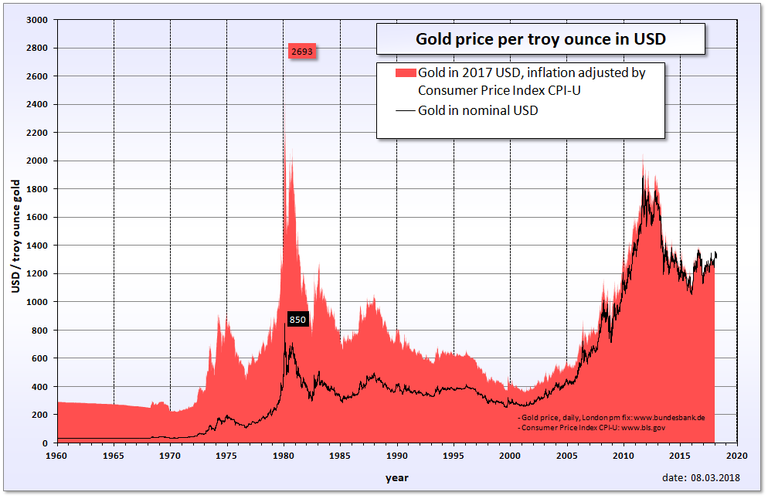
Il prezzo dell'oro dal 1960 ad oggi / The price of gold from 1960 to today
Wikipedia
L'uso e il disuso delle commodity. L'impatto ambientale.
Da come potete notare dal grafico dell'oro, questa commodity non ha mai avuto un valore costante, ma anzi è stata richiesta moltissimo in alcuni momenti e meno in altri, come ad esempio nell'intervallo che va dal 1960 al 1970. Inoltre ci sono anche variazioni di prezzo dovuti all'inflazione, ma su questo argomento non vorrei dilungarmi più di tanto. La cosa che però voglio farvi capire con questo grafico è che non sempre una risorsa è richiesta. Spesso è capitato che nella ricerca di commodity come il rame si siano trascurati altri elementi che fino a quel momento erano considerati minerali di scarto, ma che poi, per motivi tecnologici, sono stati richiesti a discapito di altre risorse. La ricerca di un minerale e l'interruzione di altre, possono portare significanti variazioni a livello sociale. Immaginate soltanto se un grande produttore di rame come il Cile debba tutto d'un tratto chiudere tutte le sue miniere per inutilizzo. Sicuramente andrebbe a perderci miliardi e miliardi di dollari. E poi cercare nuove risorse cosa comporterebbe? Nuove buche sarebbero all'orizzonte. Lo so che magari può sembrarvi ripetitivo, ma ciò è un concetto molto importante. Il come vengono usate le risorse danno modo a tutti di poter costruire un ciclo di uso e riciclo, ma se tutto ciò viene fatto in modo indiscriminato si perderebbero molte cose nel nulla. Bisogna ricordare che quello che ci dà la Terra non è infinito, ma bisogna usare la testa per poter costruire un rapporto duraturo con l'ambiente che ci circonda.
Use and disuse of commodities. The environmental impact.
As you can see from the gold chart, this commodity has never had a constant value, but rather it was required a lot in some moments and less in others, such as in the interval from 1960 to 1970. In addition there are also price changes due to inflation, but on this subject I would not like to go too far. But what I want to make you understand with this chart is that a resource is not always required. It has often happened that in the search for commodities such as copper other elements have been neglected that until then were considered waste minerals, but which, for technological reasons, have been requested to the detriment of other resources. The search for a mineral and the interruption of others can bring significant changes at the social level. Imagine only if a large copper producer like Chile should suddenly shut down all its mines for non-use. Surely it would lose billions and billions of dollars. And then look for new resources what would it entail? New holes would be on the horizon. I know it may seem repetitive to you, but this is a very important concept. How resources are used give everyone the chance to build a cycle of use and recycling, but if all this is done indiscriminately, many things would be lost in nothingness. We must remember that what the Earth gives us is not infinite, but we must use our head to build a lasting relationship with the environment that surrounds us.
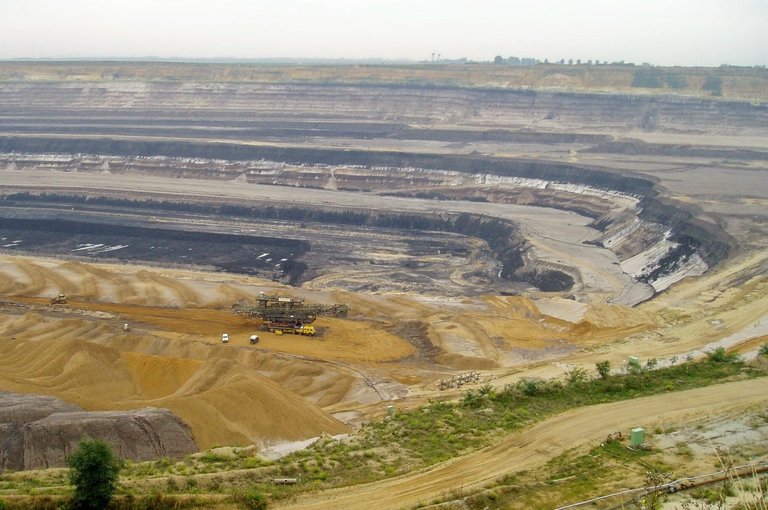
Quanto possono essere grandi queste miniere a cielo aperto? / How big can these open strip mines be?
Wikimedia commons
E con questo oggi concludo. Spero di essere stato esauriente nei miei ragionamenti ed analisi e mi auguro di essere riuscito anche a farvi capire questa tematica molto importante. Forse, per alcuni, questo post potrà sembrare poco geologico e strettamente socio-economico, ma vi posso assicurare che questa fetta di ragionamenti appartiene strettamente alla geologia. In ogni caso ora voglio salutarvi con questa frase che a tratti sembra poetica: "La ricerca di risorse è il futuro, ma l'uso indiscriminato ci riporterà nel passato. Il mondo non è usa e getta." Tenetelo a mente!
A presto :)
A presto :)
And today with this I conclude. I hope I have been exhaustive in my reasoning and analysis and I hope I have succeeded in making you understand this very important topic. Perhaps, for some, this post may seem a little geological and strictly socio-economic, but I can assure you that this slice of reasoning strictly belongs to geology. In any case, now I want to greet you with this phrase that at times seems poetic: "The search for resources is the future, but the indiscriminate use will bring us back in the past. The world is not disposable." Keep this in mind!
See you soon :)
See you soon :)
Bibliografia e approfondimenti / Bibliography and insights
Giacimenti minerari (link ita) FonteOre deposits(link eng) Source
La ricerca di Coltan in Congo (link ita) Fonte
What is Coltan? (link eng) Source
Chuquicamata copper mine (link eng) Source
Chuquicamata, miniera a cielo aperto (link ita) Fonte
Prezzi delle commodities: il caso del rame (link ita) Fonte
Commodity quotations (link eng) Source
Resource extraction and recycling with environmental costs (link eng) Source


gran bel post Mirko, complimenti. un saluto @giornalista
Grazie tante :)
Bravissimo, un post ben strutturato e un'analisi interessante. Grazie!
Grazie ^^ Spero di riuscirne a fare più spesso!
Ogni volta che leggo un tuo post imparo qualcosa di nuovo ;)
Mi fa piacere :) Quando ho tempo cercherò di mostrare il più possibile questo genere di post ^^
Grazie di essere passato!
Thank you ;)
This comment has received a 0.47 % upvote from @speedvoter thanks to: @mahadihasanzim.